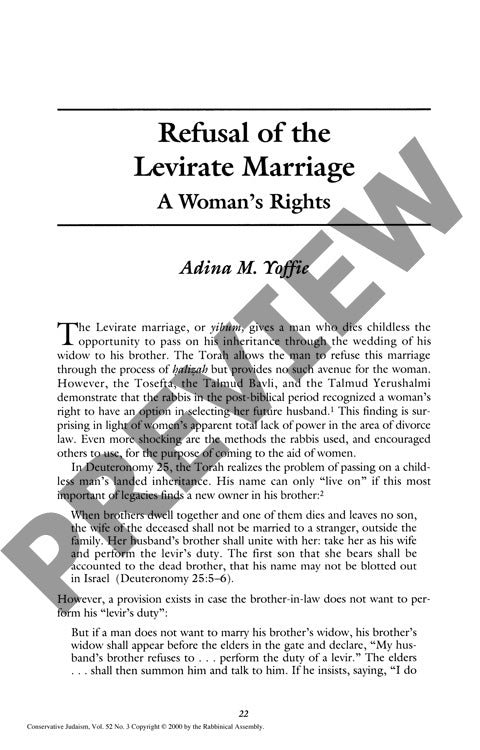Refusal of the Levirate Marriage a Woman
Couldn't load pickup availability
While biblical law granted men the right to refuse levirate marriage through halizah, women had no equivalent protection - yet rabbinic authorities actively worked to change this imbalance in the post-biblical period. Analysis of the Tosefta, Talmud Bavli, and Talmud Yerushalmi reveals how rabbis developed three innovative legal mechanisms to help women avoid unwanted levirate marriages: deceptive presentation of halizah as marriage, conditional halizah with monetary compensation, and a two-stage halizah process. Through comparative analysis of talmudic passages, particularly examining the concept of "halizah mut'ah" (misleading halizah) and debates between prominent Amoraim like Rabbi Yohanan and Resh Lakish, a pattern emerges of rabbinic authorities working within existing legal constraints to expand women's autonomy. Despite operating within an overtly patriarchal framework of divorce law, these rabbis demonstrated remarkable creativity in developing methods to protect women's interests. Their efforts represent a significant, though often overlooked, rabbinic initiative to improve women's legal status within traditional Jewish law.

More Information
-
Physical Description
-
Publication Information
Published 2000
ISBN
-
Publication Credits
Adina Yoffie

